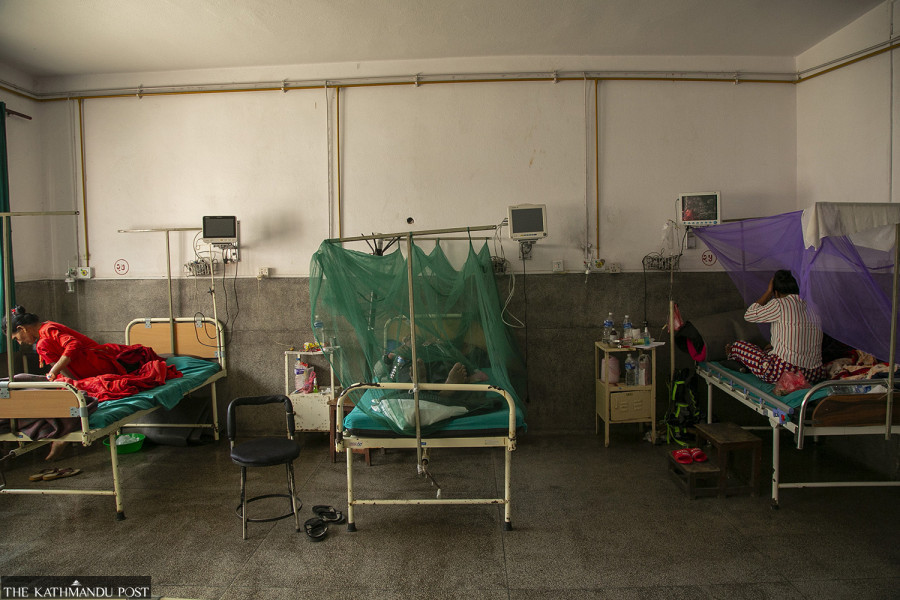Editorial
Curb the menace
The government’s old-school, ad hoc control measures will no longer effectively control dengue.
The dengue epidemic this year has spread to all districts in Nepal but Humla. According to government data, over 28,000 people have been infected, and 15 have died. However, health officials suspect the number could be higher, as many unreported cases are asymptomatic. This is the second year in a row that we have had a dengue epidemic, people are fighting for their lives in hospitals, and our health infrastructure is groaning near-capacity; yet, we don’t even see bare minimum effort from the authorities.
The fact that the government couldn’t control the disease’s spread in the past years and even this year only demonstrates their apathy. It was previously reported that many local representatives from Kathmandu Valley didn’t attend a meeting called by the Ministry of Health and Population to discuss the risk of dengue spread. Given this, it wouldn’t be an exaggeration to say that the negligence on the part of our representatives is to blame for the country’s current dengue outbreak. As responsible are the citizens, who are complacent despite knowing the dangers of the vector-borne disease.
A 2018 study by the International Centre for Diarrhoeal Disease Research, Bangladesh and some other studies show that regular insecticides are no more effective against these mosquitoes, which in turn calls for assessing the effectiveness of mosquito-killing methods in Nepal. We should also look at other countries to understand how they deal with dengue. Kolkata City Corporation in India controls the dengue-carrying Agepti mosquito year-round. Singapore has also been successful in closely inspecting female Aedes mosquitoes and destroying their breeding grounds in public spaces, construction sites and housing estates. If dengue cases are found in specific places, they are declared dengue cluster areas, and people are alerted. Additionally, the National Environment Agency of Singapore, with the help of around 70,000 gravitraps (cylindrical traps) set throughout the country, rather efficiently kills female Aedes mosquitoes.
To contain the spread of a vector-borne disease like dengue, it is important to implement standard approaches, at the least. The basic but crucial search-and-destroy and public awareness programmes should run simultaneously, which have been largely missing in Nepal. Individuals should keep their surroundings clean and cover any stagnant water inside as well as outside their homes, such as in tyres, flower pots, bottles, etc. As the festival season is on, there is an increased risk of spreading dengue to rural areas with limited infrastructure and health personnel. The government should supply sufficient medicines to every health post in the country. Putting a lid on dengue needs concerted effort of the government and individuals.
The disease control division of the Ministry of Health and Population aims to set up entomological labs in every province to monitor and test the dengue vector. Similarly, they plan to provide entomological training to health workers as these provinces lack entomologists (scientists who study insects). This, at a time when the cases have already reached an alarming level, with our authorities plagued by a tendency to delay action. It’s high time they took this vector-borne disease seriously and realised their old-school, ad hoc control measures no longer work. If only they could prioritise the fight against vector-borne diseases like dengue, which claim many lives, we could contain them.




 10.12°C Kathmandu
10.12°C Kathmandu














